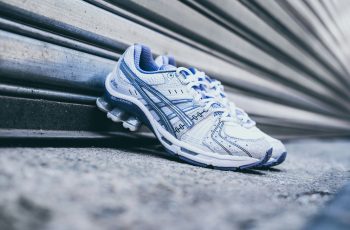Are you a passionate runner looking to conquer different terrains with ease? Then you’re in the right place! In this article, we will explore the key differences between trail running sneakers and road running sneakers. Whether you enjoy the peaceful trails or thrive on the fast-paced energy of the city streets, understanding the features and benefits of each type of sneaker will help you make the right choice and optimize your running experience. So, lace up your shoes and let’s hit the ground running!
Key Differences Between Trail and Road Running
Surface
One of the key differences between trail running and road running is the surface on which you run. Trail running is often done on unpaved surfaces such as dirt, rocks, and gravel, while road running takes place on paved surfaces like asphalt or concrete. This difference in surface can significantly impact your running experience and the type of sneakers you should wear.
Traction
Another important difference between trail running and road running is the level of traction needed. When running on trails, you often encounter uneven terrain, loose soil, and slippery surfaces. As a result, trail running sneakers are designed with aggressive outsoles that provide excellent traction to ensure a stable and secure grip. On the other hand, road running sneakers focus more on providing efficient forward motion on smooth surfaces, so the traction is optimized for these conditions.
Cushioning
Trail running and road running sneakers also differ in terms of cushioning. Trail running shoes usually have thicker and more cushioned midsoles to absorb the impact of running on uneven and rugged surfaces. The extra cushioning helps protect your feet from sharp rocks and roots, providing a more comfortable and enjoyable running experience. In contrast, road running sneakers have thinner and lighter midsoles that provide a more responsive feel, allowing for efficient energy transfer with each step.
Durability
Lastly, trail running sneakers are typically designed to be more durable than road running sneakers. The rugged terrain and harsh conditions encountered during trail running can quickly wear out the shoes if they are not built to withstand such challenges. Trail running sneakers often feature reinforced uppers, protective toe caps, and durable outsoles to ensure they can withstand the rigors of off-road running. Road running sneakers, on the other hand, prioritize lightweight construction and flexibility over durability since they face less demanding conditions.
Trail Running Sneakers
Purpose
Trail running sneakers are specifically designed for off-road running, providing the necessary features to navigate the challenging terrain encountered on trails. They are built to offer stability, traction, and protection, allowing runners to confidently tackle various natural obstacles.
Design
Trail running sneakers have a different design compared to road running shoes. They often feature a lower profile to provide stability on uneven surfaces and reduce the risk of ankle rolling. The shoes may also have a wider or more roomy toe box to accommodate swelling during long runs. Additionally, many trail running sneakers have a more rugged and protective design with features like reinforced uppers and toe caps to shield your feet from rocks, roots, and other trail hazards.
Outsole
The outsoles of trail running sneakers play a critical role in providing excellent traction on uneven and slippery surfaces. These outsoles usually have deep lugs or aggressive patterns that can grip the trail effectively, preventing slips and falls. The lugs are designed to shed mud and debris, ensuring consistent traction throughout your run.
Upper
The upper of trail running sneakers is typically more durable and protective compared to road running shoes. It is often made with materials that resist abrasion from rocks and branches. The upper may feature overlays or protective elements to shield your feet from trail hazards. Additionally, some trail running sneakers offer a gaiter attachment system to keep debris out of your shoes during your run.
Protection
One of the key features of trail running sneakers is the enhanced protection they provide. The rugged nature of off-road running exposes your feet to various hazards like rocks, roots, and branches. Trail running shoes often have additional protective elements, such as toe caps or rock plates, to shield your feet from these potential injuries.
Waterproofing
Some trail running sneakers also offer waterproof or water-resistant properties to keep your feet dry in wet and muddy conditions. This feature is particularly beneficial when running in rainy or snowy environments, as it helps prevent discomfort and potential blisters caused by wet feet.

Road Running Sneakers
Purpose
Road running sneakers are designed to optimize performance on smooth, hard surfaces like roads or sidewalks. These shoes prioritize lightweight construction and efficient forward motion, allowing for a faster and more responsive running experience.
Design
Road running sneakers have a sleeker and more streamlined design compared to trail running shoes. The focus is on providing lightweight support and comfort that enhances your running efficiency on paved surfaces. The shoes are typically more flexible to allow for a natural foot movement and promote a smooth stride.
Outsole
The outsoles of road running sneakers have a different pattern compared to trail running shoes. They usually feature a combination of rubber compounds optimized for road grip and durability. The patterns are shallower and less aggressive than trail running shoes to minimize friction and maximize energy transfer on smooth surfaces.
Upper
The upper of road running sneakers is designed to be lightweight and breathable. It often utilizes mesh materials that provide ventilation and prevent your feet from overheating during longer runs. The upper may also have minimalistic overlays or support structures to provide necessary stability without adding unnecessary weight.
Cushioning
Road running sneakers prioritize cushioning to provide a comfortable running experience on hard surfaces. The midsoles of these shoes are usually made with lightweight materials that absorb shock and impact, protecting your joints and muscles from excessive strain. The cushioning is engineered to provide a good balance between responsiveness and shock absorption, allowing for a smooth and efficient stride.
Breathability
Road running sneakers often have enhanced breathability features compared to trail running shoes. The mesh upper and strategically placed ventilation zones promote airflow, keeping your feet cool and dry even during intense workouts. This enhanced breathability helps prevent excessive sweating and reduces the risk of blisters and discomfort.
Factors to Consider When Choosing Running Sneakers
Terrain
When choosing running sneakers, consider the terrain you will be running on. If you primarily run on trails, opt for trail running sneakers that provide the necessary traction and protection. On the other hand, if your running is mostly on paved surfaces like roads or sidewalks, road running sneakers would be more suitable.
Distance
The distance you plan to run is an essential factor to consider when selecting running sneakers. Longer distances may require more cushioning and support to prevent fatigue and protect your joints. Choose shoes that provide adequate cushioning and shock absorption for the distance you’ll be covering.
Running Style
Your running style can also impact the type of sneakers you should choose. If you have a neutral gait and efficient running form, you may benefit from minimalist or neutral shoes. However, if you overpronate or have other gait abnormalities, consider shoes with stability features or those designed for your specific running style.
Pronation
Pronation refers to the natural inward rolling motion of the foot during the running or walking gait cycle. It is an important factor to consider when choosing running sneakers, as shoes with features that counteract overpronation can help prevent injuries. Determine your pronation type (neutral, overpronation, or underpronation) and select shoes that provide the appropriate level of support.
Arch Support
Consider your foot’s arch type when choosing running sneakers. High-arched feet may benefit from shoes with more cushioning and arch support, while flat feet might require shoes with stability features to prevent excessive inward rolling of the foot.
Foot Shape
The shape and width of your feet also play a role in selecting the right running sneakers. Some shoes are designed for narrower feet, while others cater to wider or more spacious toe boxes. Ensure that the shoes you choose accommodate your foot shape comfortably to prevent discomfort or potential injuries.
Budget
Like any purchase, your budget is an important consideration when choosing running sneakers. Set a reasonable budget and explore options within that range. It’s important to find a balance between quality and affordability to ensure you’re getting the best value for your money.

Trail Running Sneakers Evaluation
Stability
Trail running sneakers are evaluated based on their stability. This includes how well the shoes support and stabilize your feet on uneven terrain, minimizing the risk of ankle rolls or other injuries. Stable trail running sneakers provide a secure and confident running experience.
Grip
The grip of trail running sneakers is crucial for traction on varying trail surfaces. Shoes with an effective grip will allow you to confidently navigate slippery surfaces, loose soil, and steep inclines. The outsole design and lug patterns play a significant role in determining the grip of trail running sneakers.
Protection
The level of protection offered by trail running sneakers is an important factor to consider. The shoes should adequately shield your feet from trail hazards such as rocks, roots, thorns, and sharp objects. This protection may come in the form of reinforced uppers, toe caps, or rock plates.
Water Resistance
Trail running sneakers with water-resistant or waterproof features are highly beneficial, especially when running in wet or muddy conditions. These shoes help keep your feet dry and comfortable by preventing moisture from seeping in. Water resistance ensures that your shoes don’t become heavy and saturated during your trail runs.
Weight
The weight of trail running sneakers plays a role in the overall agility and comfort of your run. Lighter shoes can enhance your performance by allowing for quicker movements and reducing fatigue. However, it’s important to strike a balance between weight and necessary features such as protection and durability.
Flexibility
Trail running sneakers should offer a good balance of flexibility and support. The shoes should allow for a natural range of motion while providing enough structure to prevent excessive foot pronation or supination. Flexibility ensures a smooth and efficient stride while adapting to the uneven terrain.
Road Running Sneakers Evaluation
Cushioning
Cushioning is an essential aspect to evaluate in road running sneakers. The right amount of cushioning can provide comfort and shock absorption, reducing the risk of injuries and minimizing muscle fatigue during longer runs. Road running sneakers with responsive yet plush cushioning enhance the overall running experience.
Responsiveness
Road running sneakers should offer a high level of responsiveness, meaning they efficiently return energy with each stride. This responsiveness helps propel you forward and promotes a faster running pace. Shoes with a more responsive design can enhance your performance, particularly in speed-oriented road running.
Breathability
Good breathability is important in road running sneakers to prevent excess sweating and discomfort. Shoes with breathable uppers and effective ventilation allow for airflow, keeping your feet cool and dry. Enhanced breathability can help reduce the chances of blisters and other foot issues caused by excess moisture.
Weight
The weight of road running sneakers is another significant factor to consider. Lighter shoes can improve your running speed and efficiency, as they reduce the energy required to lift your feet off the ground. Opting for lightweight road running sneakers can contribute to a faster and more enjoyable running experience.
Flexibility
Flexibility is crucial in road running sneakers, allowing for a natural foot movement and an efficient stride. Shoes that are overly stiff can hinder your running form and lead to discomfort or injuries. Road running sneakers should provide a balance between flexibility and structure to optimize performance.
Durability
The durability of road running sneakers is important, especially if you plan to log high mileage or participate in regular training sessions. Shoes with durable materials and construction will withstand the repetitive impact of running on hard surfaces and retain their performance for a longer duration.

Benefits of Using Trail Running Sneakers
Enhanced Traction
One of the key benefits of using trail running sneakers is the enhanced traction they provide on uneven and slippery surfaces. The aggressive outsole patterns and lugs of trail running shoes ensure a secure grip, allowing you to confidently navigate challenging trails without the fear of slipping or losing stability.
Ankle Support
Trail running sneakers often provide better ankle support compared to road running shoes. The stability features, such as a lower profile design and supportive overlays, help minimize the risk of ankle rolls and other injuries on uneven terrain. The added ankle support allows you to tackle rough trails with more confidence.
Protection from Trail Hazards
Trail running sneakers are designed to protect your feet from various trail hazards such as rocks, roots, and thorns. The reinforced uppers, toe caps, and rock plates of trail running shoes offer an extra layer of protection, shielding your feet from potential injuries caused by trail debris.
Better Stability
The stability offered by trail running sneakers is essential when running on uneven and unpredictable terrain. The shoes’ design and construction focus on providing stability and balance, minimizing the risk of ankle twists or missteps. The stability of trail running sneakers allows you to maintain a steady and controlled gait, even on challenging trails.
Benefits of Using Road Running Sneakers
Lightweight Design
One of the key benefits of using road running sneakers is their lightweight design. These shoes prioritize lightness to enhance speed and agility, making them ideal for fast-paced road running. The reduced weight allows for an efficient stride, minimizing energy expenditure and allowing you to run at a faster pace.
Responsive Cushioning
Road running sneakers often feature responsive cushioning that efficiently returns energy with each step you take. This responsive cushioning propels you forward, maximizing your running performance and promoting a more efficient stride. The combination of cushioning and responsiveness in road running shoes makes for a comfortable yet dynamic running experience.
Breathability
Road running sneakers prioritize breathability to keep your feet cool and dry during runs. The mesh upper materials and ventilation systems in these shoes allow for airflow, preventing excessive sweating and reducing the chances of discomfort or blisters. The enhanced breathability of road running sneakers contributes to a more enjoyable and comfortable running experience.
Versatility
Road running sneakers are highly versatile and suitable for various activities beyond just road running. They can be used for gym workouts, cross-training, or even casual wear. The sleek design and comfort of road running shoes make them a versatile option for individuals looking for all-around athletic footwear.
Conclusion
When it comes to choosing the right running sneakers, understanding the key differences between trail running and road running is crucial. Trail running sneakers are designed to handle uneven and rugged terrain with features such as enhanced traction, protection, and stability. On the other hand, road running sneakers prioritize lightweight design, cushioning, and breathability for efficient and comfortable running on smoother surfaces.
Consider factors such as the terrain you’ll be running on, the distance you plan to cover, your running style, and your foot characteristics. By evaluating the specific needs and requirements of your running activities, you can make an informed decision and select the most suitable running sneakers.
Both trail running sneakers and road running sneakers offer unique benefits that enhance your running experience. Trail running sneakers provide enhanced traction, ankle support, and protection from trail hazards, while road running sneakers offer lightweight design, responsiveness, breathability, and versatility.
Ultimately, choosing the right running sneakers will greatly contribute to your comfort, safety, and overall enjoyment of your running adventures. So lace up your shoes, hit the trails or the roads, and embark on your running journey with confidence!


